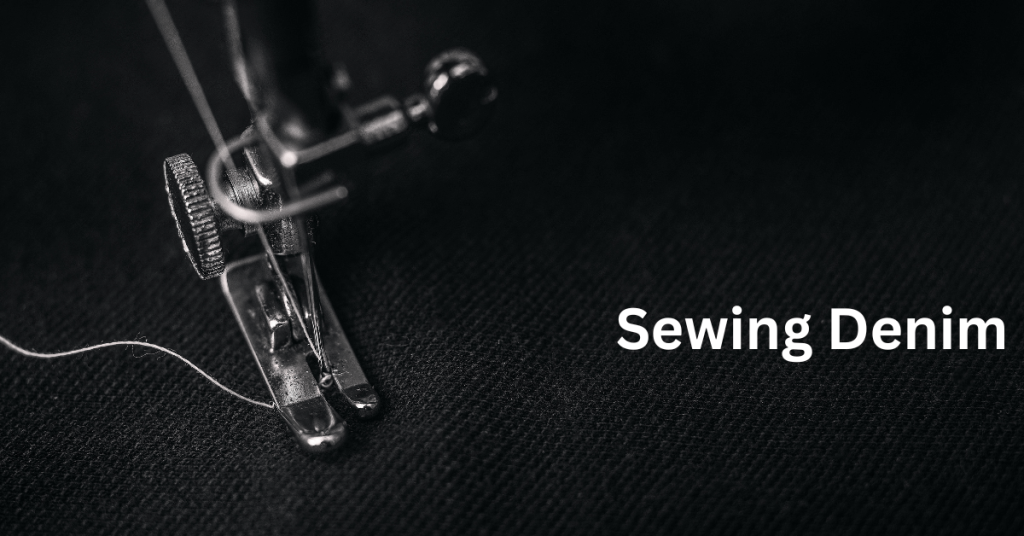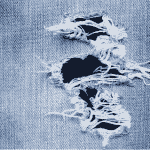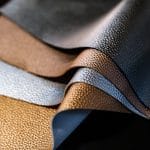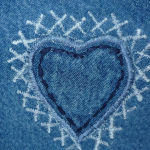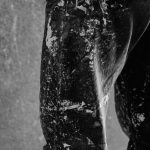Denim is a versatile and durable fabric that has been a staple in our wardrobes for over a century. Whether you’re a seasoned sewist or just starting out, sewing denim can be a rewarding and fulfilling experience.
We will lead you through the whole process of sewing denim, from selecting the correct needles and threads to learning the stitching techniques that will assure professional-looking results in this complete guide.
So, grab your sewing machine, and let’s dive into the world of sewing denim!
Supplies for Sewing Denim
Before you start sewing denim, it’s important to have the right supplies. Here are the essential tools and materials you will need:
-
Needles for Sewing Denim
When sewing denim, it’s crucial to use the right needles for the job. Denim needles are stronger and sharper, designed specifically for piercing heavy fabric.
Some popular brands include Universal, Singer, Klass, and Schmetz. The needle size you use will be determined by the weight of your denim:
- Chambray or lightweight denim: 80/12 needle
- Medium denim: 90/14 needle
- Thicker denim: 100/16 needle
-
Thread for Sewing Denim
Choosing the right thread is crucial for strong and durable seams. Opt for a strong polyester thread from reputable brands like Rasant, Coats, Clark, or Gutermann. While specialized polyester thread for jeans is available, it may not be suitable for all sewing machines.
Thinner but strong polyester thread is a great alternative. If you choose to use a thicker thread for topstitching, use regular thread in the bobbin.
-
Sewing Machine for Sewing Denim
For lightweight denim, your regular sewing machine with the appropriate needles, thread, and technique will suffice. If you routinely sew denim or work with thick materials, consider investing in a heavy-duty sewing machine with a solid inner frame and a more powerful motor.
Singer offers a range of heavy-duty machines with metal interiors that can handle sewing denim with ease.
Choosing the Right Pattern
When choosing a sewing pattern for denim, it’s important to consider the weight and characteristics of the fabric. Opt for patterns that complement the strong feel of denim and are suitable for its durability. Simple patterns with limited gathering or fullness work best for sewing denim.
Here are a few examples of patterns that are well-suited for denim:
- Maisie Cape Pattern
- Tiffany Dress Pattern
- Daisy Dress Pattern
- Nathan Pants Pattern
Pre Washing Your Denim Fabric
Before you start sewing, it’s crucial to prewash your denim fabric. This step ensures that the fabric won’t shrink or bleed colour after you’ve completed your garment.
Follow these steps to prewash your denim fabric:
- Fill a basin or sink halfway with warm water.
- Add a mild detergent and mix it well.
- Submerge your denim fabric in the water and let it soak for about 30 minutes.
- Gently agitate the fabric to remove any dirt or excess dye.
- To eliminate any traces of detergent, thoroughly rinse the fabric with cold water.
- Hang your denim fabric to dry or tumble dry on a low heat setting.
For darker denim, it’s recommended to wash it twice or soak it in a mixture of vinegar and warm water to help set the dye and prevent excessive fading.
Cutting Denim Fabric
Properly cutting your denim fabric is essential for achieving accurate and well-fitting garments.
Follow these tips for cutting denim fabric:
- Use sharp sewing scissors or a rotary cutter with a cutting mat to ensure clean cuts.
- Pay attention to the grain of the fabric to prevent twisting when the garment is worn. Ensure that the nap, if present, all faces the same direction.
- Use sharp, strong pins to prevent the denim from slipping during the cutting process.
- Mark the fabric with white or yellow tailor’s chalk to indicate pattern pieces and any necessary adjustments.
- If your denim fabric frays a lot, consider zigzagging or serging the edges immediately after cutting to prevent fraying.
- For thicker denim, it may be easier to cut each pattern piece separately instead of folding the fabric. Careful planning and flipping the pattern to get mirrored pieces will be necessary.
Sewing Denim Techniques
Now that you have your supplies ready and your machine set up, it’s time to start sewing denim. Here are some essential sewing techniques for achieving professional-looking results:
-
Seams for Sewing Denim
When sewing denim, choose a seam that suits the style and weight of your fabric. Here are a few options:
- Graded Seam: Suitable for lightweight denim, a graded seam reduces bulk and creates a neat finish. Lengthen the stitch length to 3.0 for a sturdy seam.
- Bound Seam: For heavyweight denim, a bound seam provides strength and durability. It involves encasing the raw edges with bias tape or fabric strips.
- Flat Fell Seam: Flat fell seams are commonly used in jeans and provide a clean finish. They involve folding and topstitching the fabric to encase the raw edges.
-
Seam Finishes for Sewing Denim
Finishing the raw edges of your denim seams is essential for preventing fraying and ensuring endurance. Consider these finishing techniques:
- Serger Finish: If you have a serger, use it to finish the raw edges of your seams. This not only prevents fraying but also adds a professional touch.
- Flat-Felled Seam: For straight seams, especially in jeans, a flat felled seam is a great option. It involves folding and stitching the fabric to encase the raw edges, resulting in a durable and neat finish.
-
Decorative Stitching for Sewing Denim
Topstitching is a popular decorative technique that adds style and reinforces seams. Follow these tips for effective topstitching on denim:
- Use the right cotton thread for the desired effect, and consider using a needle with a larger eye to accommodate thicker threads.
- Stitch over seams twice to add strength and durability to your garment.
- Consider using a topstitching thread or upholstery thread, which is stronger and thicker than regular sewing thread.
Finishing Touches: Pressing and Topstitching
Pressing your denim fabric as you sew is crucial for achieving professional-looking results.
Here are some tips for pressing and topstitching denim:
- To properly press the fabric, use a steam iron. Pressing helps flatten the seams and gives your garment a polished look.
- If your denim is really thick, consider turning the wheel of the machine by hand to navigate through tough spots. Guide the fabric carefully to prevent slipping and needle breaking.
- To reduce bulk in certain areas, such as necklines or sleeve edges, consider cutting facings out of a lighter fabric. This will result in a smoother finish and easier sewing.
Sewing Denim with Special Considerations
While sewing denim is relatively straightforward, there are a few special considerations to keep in mind:
-
Working with Thick Denim
When sewing with thick denim, it’s important to choose the right sewing machine that can handle the extra weight. Look for a machine with a strong metal frame and consider using specialised presser feet like a jean presser foot, walking foot, or roller foot to improve the sewing process.
-
Troubleshooting Needle Breakage
Suppose you experience needle breakage when sewing denim, check that you’re using the correct needle size and type for your fabric. Additionally, ensure that you’re using a sharp, new needle and that your machine is properly threaded.
-
Experiment and Practice
Sewing denim can take some practice, so don’t be discouraged if your first attempts aren’t perfect. Experiment with different techniques, thread types, and machine settings to find what works best for you.
Conclusion
Sewing denim is a rewarding and enjoyable sewing project that allows you to create durable and stylish garments. By following the step-by-step instructions in this article, you will be equipped with the knowledge and techniques needed to confidently stitch denim.
Remember to choose the right needles and thread, adjust your machine settings accordingly, and practise your sewing techniques. With a little practice and creativity, you’ll be able to sew denim like a pro.
